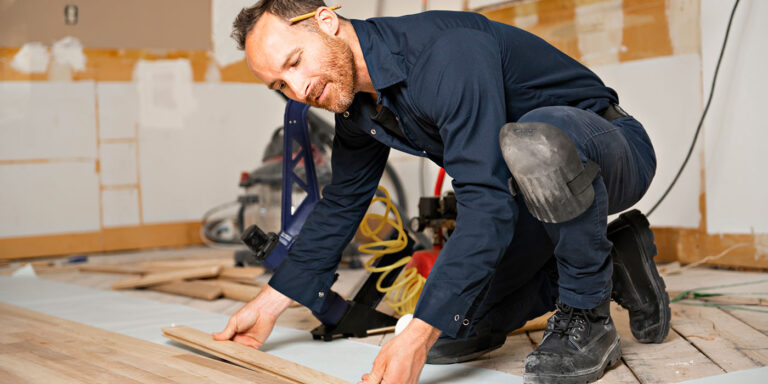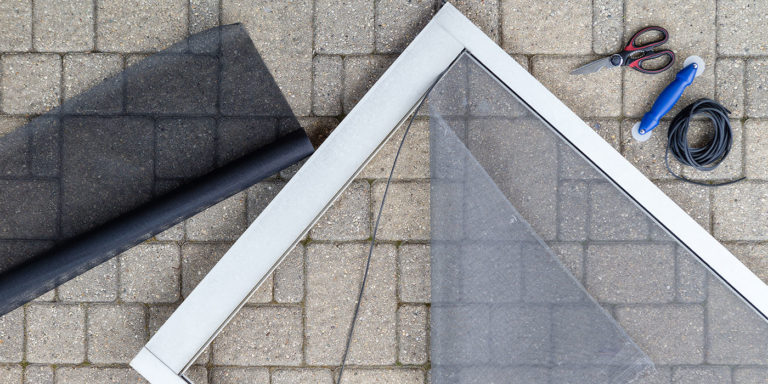Inspect door & window weatherstripping
Gaps around doors and windows are a big source of cold winter drafts so check the weatherstripping to make sure it is intact. If it is cracked, loose or missing, replace. Also inspect the door sweep at the bottom of all exterior doors. If it is cracked or falling apart, replace.
Clean up gardens
It is not necessary to cut down spent perennials in preparation for winter. Leaving them intact can help create habitat for local wildlife. But you should dig out anything you don’t want to see in the spring like weeds. If you are worried about certain plants surviving the winter, cover them with a thick layer of mulch after the first hard frost.
Drain hoses & turn off outdoor water
To prevent your garden hose from splitting over winter remove it from the faucet and thoroughly drain by hanging it up high and allow gravity to force the water out. Also, turn off exterior water faucets by closing the shut-off valve inside the house. Be sure to bleed the pipe so there’s no residual water left.
Fertilize lawn
The best time of the year to fertilize your lawn is in September or October. Fertilizing in the fall helps to minimize winter damage and gives your lawn stronger roots for robust spring growth. Use a fertilizer that is specifically designed for fall application. You should also raise the mowing height slightly in the fall. Longer grass blades will add winter protection.
Clean out gutters
With falling leaves starting to blow in the wind and accumulate, it’s important to keep your gutters clear so that water can drain freely off the roof and away from the house. Remove any trapped debris from the gutters and use a hose to make sure the downspouts are draining properly. Consider installing gutter guards to keep most of the debris out.
Inspect chimney
Wood-burning chimneys should be cleaned annually by a qualified chimney sweep. A clean, properly functioning chimney will reduce the risk of carbon monoxide poisoning and prevent the buildup of creosote which can cause a chimney fire. Also, check to make sure the damper is working properly and the chimney cap above the roof is intact.
Check furnace
Your furnace will run efficiently with a clean filter so stock up for the winter. How often you change the filter will depend on your furnace, check the manufacturer’s recommendation. Remove stored items around your furnace so the airflow isn’t blocked. Consider contacting an HVAC specialist to give your furnace a thorough maintenance check.
Order firewood
Demand for firewood increases as winter approaches so order now. How much you need depends entirely on how often you will have a fire. Ensure your firewood is dry, seasoned and appropriately stacked. Do not stack it against your house. Keep it off the ground and in stacks that allow airflow. A structure with 3 sides and a roof is ideal for storing firewood.
Trim large tree branches
Large tree branches that are dead or diseased become a safety issue so it’s best to remove them before they come down in a strong winter wind. For the health of the tree, cut major limbs after the leaves have fallen and tree is dormant. Use lopper shears for smaller branches and a chainsaw for the larger ones.
Store outdoor furniture
Wash your outdoor furniture and let it dry before storing. Ideally, outdoor furniture should be stored inside but if space is an issue, store the cushions inside and move the furniture to a protected area of your yard and cover with a good tarp. Tie the tarp with rope or bungees so that it can’t be blown off by strong winter winds.
Check flashlight batteries
Be prepared for storms with working flashlights and lanterns. Batteries stand a better chance of lasting longer if you take them out of flashlights and lanterns after use. Purchase extra batteries and keep them in their original packaging until needed. Most unused alkaline batteries will last between five and 10 years.
Test carbon monoxide & smoke detector batteries
Continue to test all your battery powered and hard wired detectors. Most detectors have a test button and will sound a short alarm that indicates the unit is working. Replace any non- functioning or outdated detectors.



